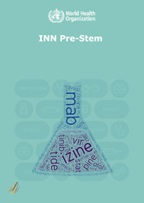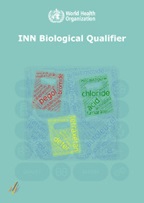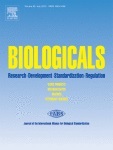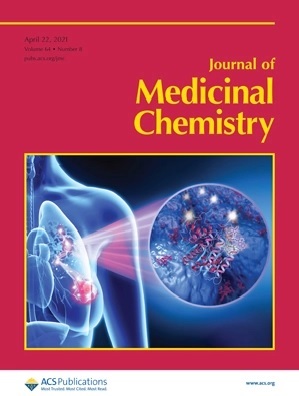INN Schemas
Publishing INN Lists
All newly selected names are published, after informing the originator of the request in the journal WHO Drug Information. Two proposed and two recommended lists are published per year. The lists are trilingual, in English, French and Spanish, and include Latin INNs.
All INNs are published in a cumulative list of INNs *, which is updated periodically and includes INNs in Latin, English, French, Spanish, Arabic, Chinese and Russian, as well as reference to other common names. At present, more than 8,000 INNs have been published.
Other Publications and Documents
Stem

INN Stem Book Addendum 202506-2024
The document "Use of stems in the selection of International Nonproprietary Names (INN) for pharmaceutical substances" is intended primarily for persons...

INN Stem Book Addendum 202503-2024
The document "Use of stems in the selection of International Nonproprietary Names (INN) for pharmaceutical substances" is intended primarily for persons...

The step before the adoption of an INN stem by the INN Expert Group is to publish them as a pre-stem in order to collect possible issues.
Biologicals

INN Bio Review 2022
This document, first published on the website of the INN Programme in 2006, therefore presents an inventory of the policy decisions taken by the INN Expert...

INN for Variant COVID-19 Vaccine Active Substances
Any change to the structure of a medicinal active substance will trigger a requirement for a new INN to be assigned. To highlight the close...

-tug for “unmodified immunoglobulins”The suffix -tug is used for monospecific full-length immunoglobulins with unmodified constant...

INN for Nucleic acid-based substances
Mandatory information for INN selection and publication for nucleic-acid based substances including gene therapy substancesAnnex to INN application form(Please...

INN for Proteins (including monoclonal antibodies)
Mandatory information for INN selection and publication for all proteins (including monoclonal antibodies):Annex to INN application form(Please note that...

INN for Cell-based therapies
Mandatory information for INN selection and publication for cell-based therapies including cell-based gene therapy substances.(Please note that incomplete...

INN for fusion protein
The -fusp naming scheme is not designed to give comprehensive information about the substance in the name, but rather to indicate that it is a fusion protein...
Revised monoclonal antibody (mAb) nomenclature scheme
New INN monoclonal antibody (mAb) nomenclature scheme
INN for Cell-based therapies
INN Nomenclature Scheme for Cell Therapy Products (CTP)
Nomenclature schemes for advanced therapies (substances for gene therapies, substances for cell therapies,substances for cell-based gene therapies and virus-based therapies)

Biological Qualifier Frequently Asked Questions
Several drafts of the Proposal for a Biological Qualifier have been published evokingextensive and detailed response. Attempts were made to incorporate...

Biological Qualifier an INN Proposal
This voluntary scheme is intended to provide a unique identification code (BiologicalQualifier), distinct from the INN, for all biological substances that...

The INN programme has received many enquiries from developers of cell therapy productsand there is a pressing need to consider the establishment of a naming...
INN, Modified INN, INN Radical Book

The present document on the use of INNs is intended as a general explanation of the INN selection process. They have been developed for drug regulatory...

International Nonproprietary Names Modified
Special situations mentioned above comprise creation of names ofindividual members belonging to a group of closely related substances. Whenthe INN Programme...

INN Radical Book 2015
As a general rule, since 1975 INNs are selected for the active moiety of pharmaceuticalsubstances. In the case of INNs of salts and esters it is left to...
Various
School of INN

Learning clinical pharmacology with the use of INNs...
Use of stems in the selection of International Nonproprietary Names (INN) for pharmaceutical...

External Publications
/health-product-policy-and-standards-(hps)/inn-and-classification-of-medical-products-(inn)/bulletin_cover_january_25_small.tmb-340v.png?sfvrsn=e73aeaf7_1)
Disease foci of pharmaceutical research and development as reflected in applications for International...
We obtained details of proposed pharmaceutical substances from 1953 to 2022 from the International Nonproprietary Names (INN) database. We used the DrugBank...

New WHO INN for cell-based and gene-based substances: timing, usage, and simplicity
The WHO International Nonproprietary Names (INN) Programme assigns unique names to medicinal substances, which are indispensable for their clear identification,...

International nonproprietary names for monoclonal antibodies: an evolving nomenclature system
Appropriate nomenclature for all pharmaceutical substances is important for clinical development, licensing, prescribing, pharmacovigilance, and identification...

WHO international non-proprietary names: the need to distinguish COVID-19 vaccines
The WHO International Nonproprietary Names Programme would like to highlight that international non-proprietary names (INNs), assigned to well defined...

The harmonization of World Health Organization International Nonproprietary Names definitions for cell...
The World Health Organization (WHO) assigns International Nonproprietary Names (INN) to pharmaceutical substances, including advanced therapy medicinal...

The INN global nomenclature of biological medicines: A continuous challenge
Medicines are assigned International Nonproprietary Names (INN) by the World Health Organization (WHO), pursuing the aim to increase patient safety. Following...

International Nonproprietary Names (INN) for novel vaccine substances: A matter of safety
International Nonproprietary Names (INN) are assigned by the World Health Organization (WHO) to pharmaceutical substances to ensure global recognition...

What’s in a Name? Drug Nomenclature and Medicinal Chemistry Trends using INN Publications
The World Health Organization assigns international nonproprietary names (INN), also known as common names, to compounds upon request from drug developers....

A pilot programme to teach pharmacology using the international nonproprietary names in a pharmacy school...
In pharmacology lectures, one of the major challenges faced by students is how students can remember an increasing list of a large number of drug names....
